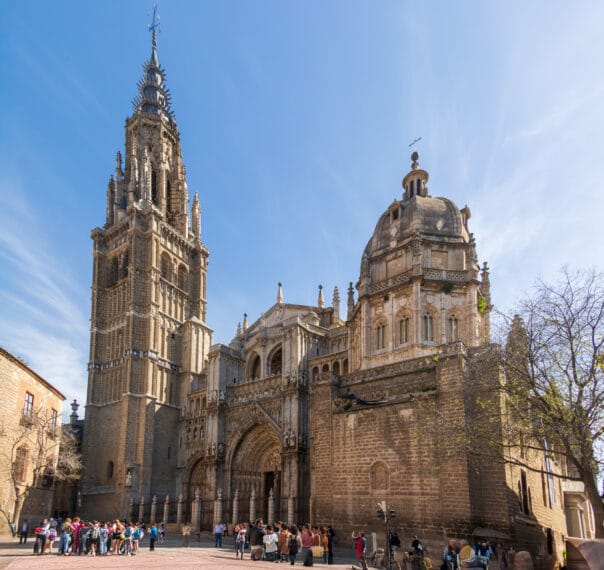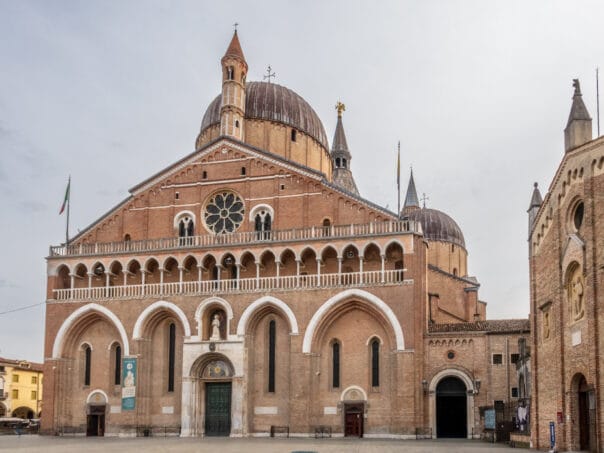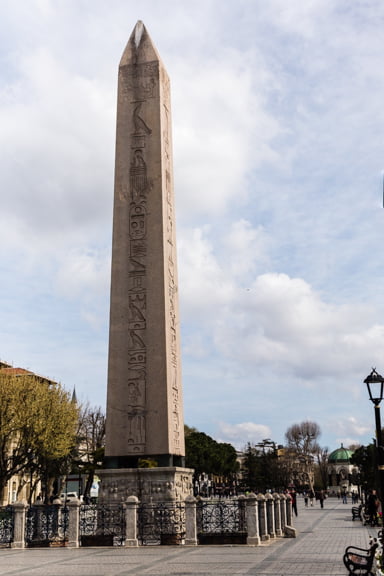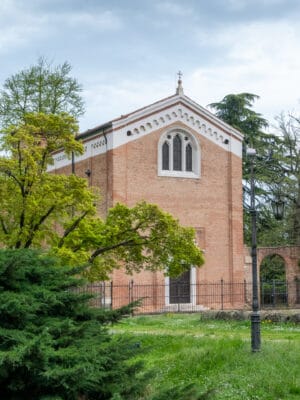I awoke to rain on my first full day in Venice, but it didn’t dampen my enthusiasm. I grabbed an umbrella and made my way to St. Mark’s Square for a tour of the Doge’s Palace and St. Mark’s Basilica—two treasures that are must-see attractions in the city. Wisely I reserved my tour that included a gondola ride in advance.

Morning Tours:
Our guide began at the Doge’s Palace, an immense and ornate Gothic structure that once served as the residence of the Doge, the elected leader of Venice. Inside, we wandered through grand rooms with gilded ceilings, intricate woodwork, and immense Renaissance paintings by Tintoretto and Veronese. The Council Chamber and the Sala del Maggior Consiglio, with its walls covered in historic depictions of the Venetian Republic, were particularly inspiring. Amazingly, Venice looks just the same today as in those paintings.
We peeked out a window to see the famous Bridge of Sighs—named for the sighs of prisoners catching their last glimpse of Venice before being led to the dark, dank prison cells. (We saw the prison cells, too.)

Next, we made our way into the golden glow of St. Mark’s Basilica, an extraordinary building that began construction in 1063. Its multiple Byzantine domes, glittering mosaics, and relic-laden interior point to Venice’s role as a trading power and cultural bridge between East and West. I could have lingered for hours, admiring the way light played off the thousands of tiny glass mosaic tiles. Many of the mosaics tell Bible stories like one showing Noah and the ark, because most people could not read in those times.

When the tour ended (too soon for me), we made our way around to the gondola docks. Though Venetians no longer use gondolas for everyday travel, riding in one offers the ideal way to see the city. As we glided through quiet canals, with only the soft lapping of water and the occasional song from a gondolier, I imagined what life was like here centuries ago. If you’re in Venice, you simply must splurge on a gondola ride—it’s as magical as everyone says.

After a full morning and early afternoon of sightseeing, we stopped for a light lunch and then returned to our apartment for a brief rest. Our early evening plans were something I’d especially been looking forward to: a food tour through Cannaregio, one of Venice’s more authentic neighborhoods.
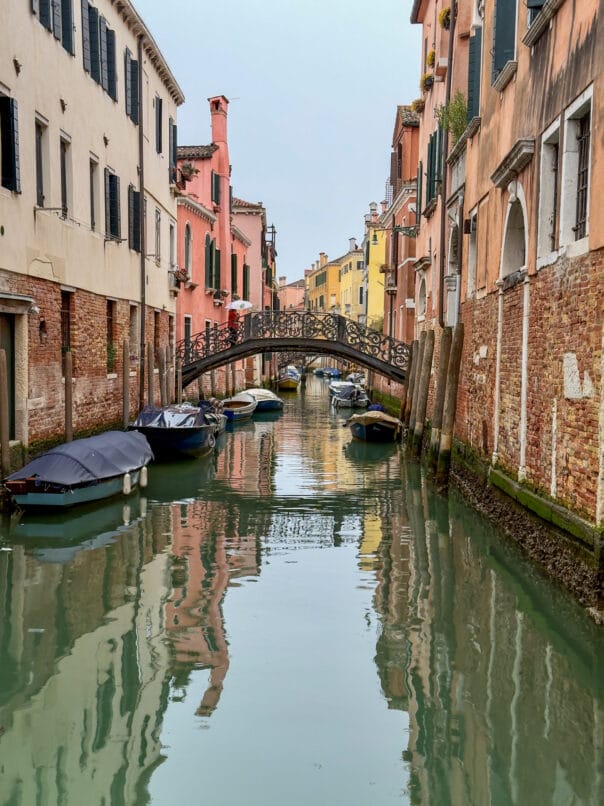
In fact, our rental apartment was also in Cannaregio, an area still home to many locals and largely overlooked by tourists who stick to the main arteries like Strada Nova. But just a few turns into the narrow alleyways, and over some small bridges, and ta-dah—the city feels different—more lived-in, more real.
That evening, we joined a small group for a guided food tour that would take us to five local spots for eight tastings and four drinks. Highlights would include cicchetti (Venetian-style tapas), creamy baccalà mantecato served over grilled polenta, freshly made pasta, and artisan gelato. Along the way, we’d sip local wines, trade stories with our guide, and get a glimpse into how real Venetians eat, drink, and live.
The Food Tour
Our tour began near Venice’s historic Teatro Italia—once a grand theater, now an upscale grocery store with vaulted frescoed ceilings that hint at its former life. There, we met our guide and the other members of our small group, totaling just seven people—perfect for weaving through alleyways and slipping into neighborhood bars.
Our first stop was a traditional cicchetti bar, or bacari, where locals gather for small bites and an ombra—a small glass of local wine. My travel buddy, Judy, opted for a classic Venetian Spritz, made with Aperol, Prosecco, and a splash of soda.
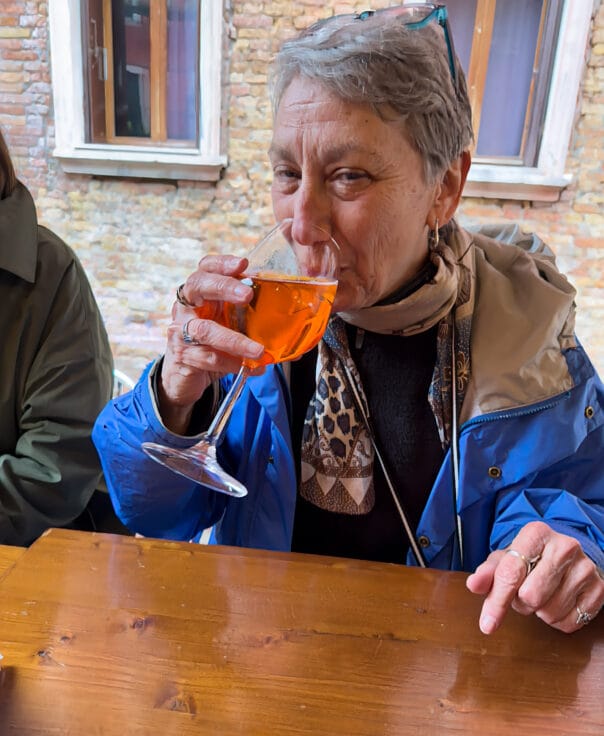
The atmosphere was relaxed and welcoming, with the counter lined with platters of marinated vegetables, crostini topped with seafood, and golden fried treats. We sampled several combinations, each one more flavorful than the last.
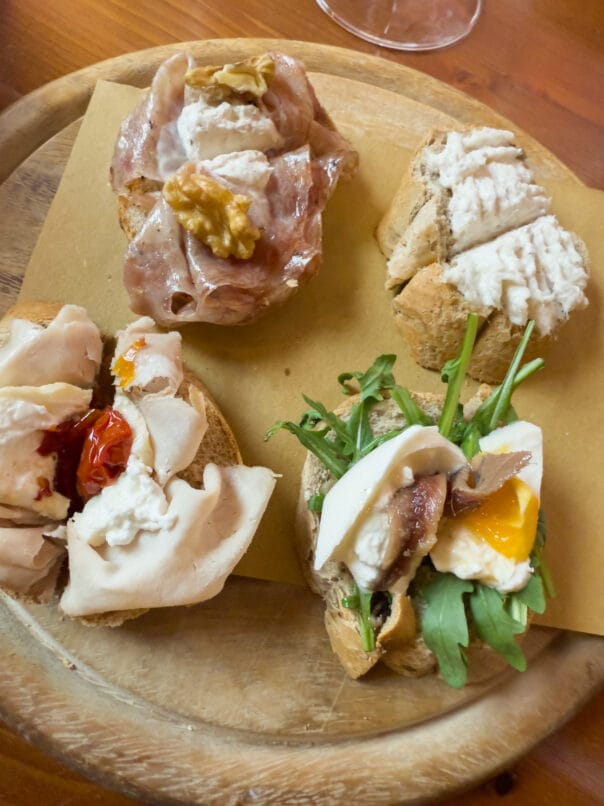
We moved on to our second stop, another small and casual Venetian wine bar where the focus was on traditional baccalà mantecato- a dish made from salt cod, served on toasted bread or grilled polenta. Along the way, we noticed the bars were now bustling, filled with locals winding down the day and a few weary tourists. Even with the livelier atmosphere, it was refreshing to be away from the more crowded areas of Venice, tucked into this authentic corner.
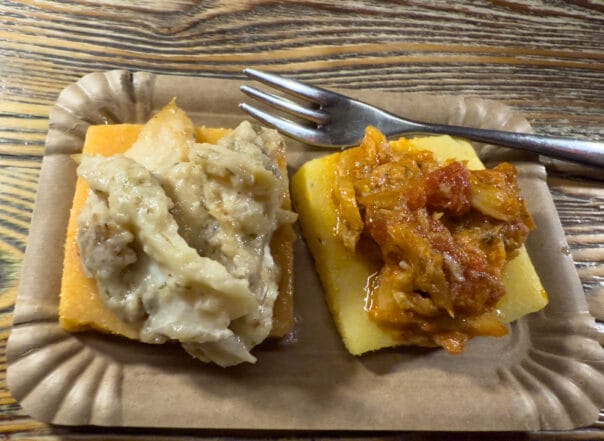

For our main course, we ventured even deeper into the district—thankfully with our guide leading the way through the maze of alleys. (Tip- Google maps and the like often get confused in these alleys as well. You need to come out to a plaza and let the cellular data catch up.) At the sit-down restaurant, we were welcomed with a simple yet delightful starter: extra virgin olive oil poured onto our plates, sprinkled with herbs and spices, and accompanied by warm, crusty bread. Dipping the bread into that fragrant oil was a perfect beginning to the meal—rustic and satisfying.

For my entrée, I chose squid ink pasta, a Venetian classic. The deep black sauce may be startling at first glance, but the flavor is rich, aromatic, and unmistakably tied to the sea. I savored every bite, and ordered it again the next day. Judy opted for eggplant parmesan, which she declared delicious. As we dined, our guide answered questions about daily life in Venice, from rising sea levels to the challenges of living in a city without cars. The meal was warm and relaxed, made even better by the easy conversation and camaraderie among our small group of fellow travelers.
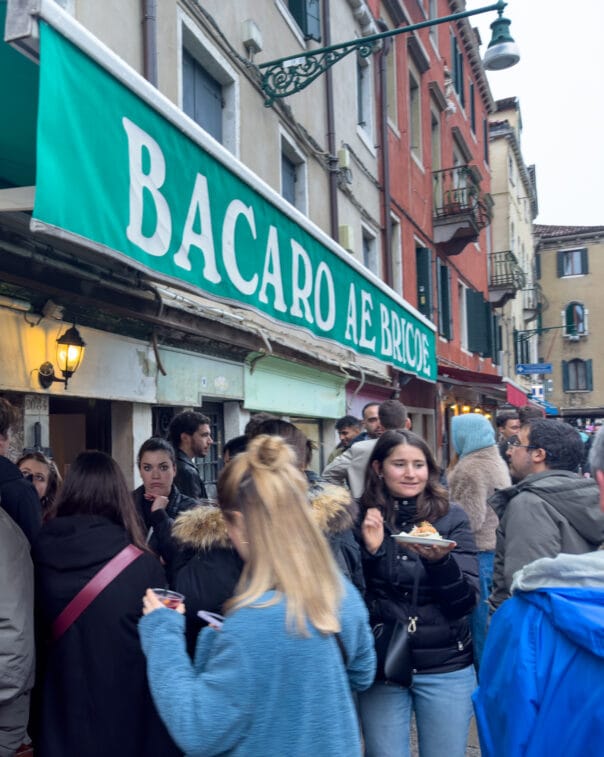
By now, darkness had settled over the city—a perfect time for one last adventure. Our guide led us to the narrowest alleyway in Venice, just wide enough for one person to pass through at a time. The passage ended with a few worn stone steps descending directly into the lagoon—a quiet, almost secret corner of the city that most visitors never find. Along the way, we also paused to look at old stone wells, once essential for collecting and storing rainwater in underground cisterns. It was a small glimpse into the practical ingenuity of old Venice.


Though we were quite full by this point, we were promised a scoop of the city’s best artisan gelato—and naturally, we found room. I chose pistachio, and I have to say, it was the best dessert I had during my entire three-week trip. Creamy, nutty, and perfectly balanced.

We ate our gelato in Campiello Remer, a delightful dark corner on a canal with a view of the Rialto Bridge. Venice takes on a magical glow at night, a soft shimmer that the crowds of the day miss. It’s a calmer, more intimate city after dark—one that reveals itself slowly to those willing to wander a bit off the beaten path. I wholeheartedly recommend this food tour, presented by The Tour Guy. It’s a perfect way to experience the real Venice—its flavors, its stories, and its surprising evening charm.



